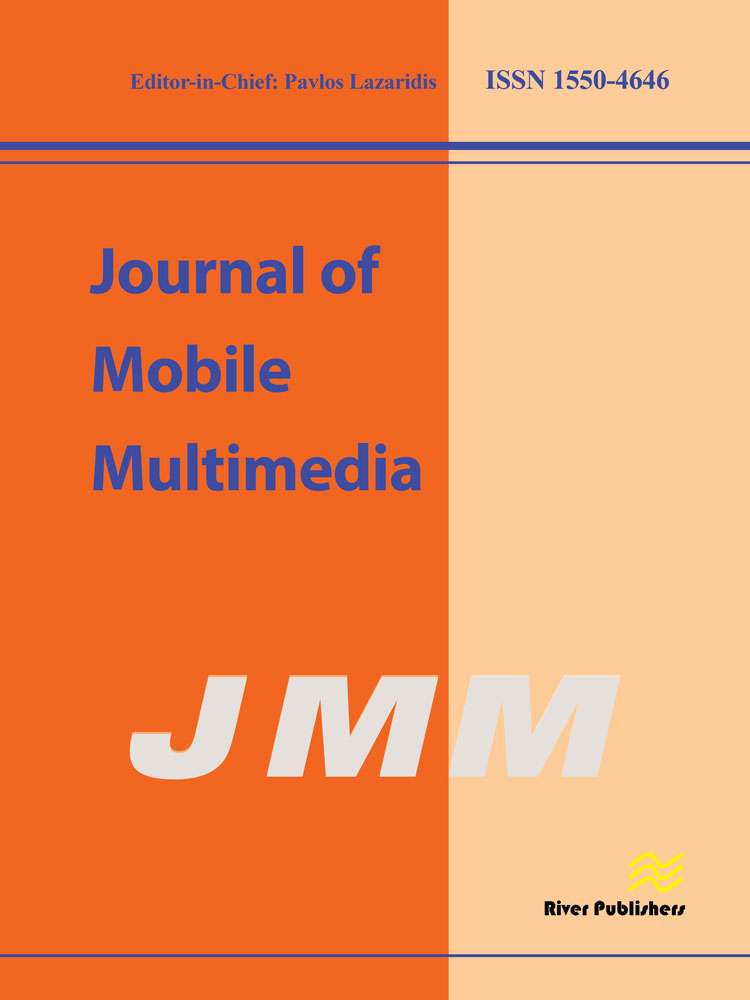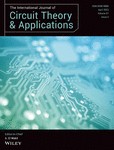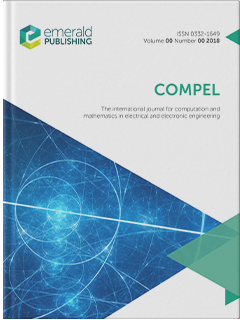
A Dimensional Consistency Aware Time Domain Analysis of the Generic Fractional Order Biquadratic System (2022)
Title : A Dimensional Consistency Aware Time Domain Analysis of the Generic Fractional Order Biquadratic System
Researcher : Banchuin, R. and Roungsan Chaisricharoen
Department : Faculty of Engineering & Graduated School of IT, Siam University, Bangkok, Thailand
Email : rawid.ban@siam.edu
Abstract : In this research, the time domain analysis of the fractional order biquadratic system with nonzero input and nonzero damping ratio has been performed. Unlike the previous works, the analysis has been generically done with dimensional consistency awareness without referring to any specific physical system where nonzero input and nonzero damping ratio have been allowed. The fractional differential equation of the system has been derived and analytically solved. The physical measurability of the dimensions of the fractional derivative terms which have been defined in Caputo sense, and response with significantly different dynamic from its dimensional consistency ignored counterpart have been obtained due to our dimensional consistency awareness. The resulting solution is applicable to the fractional biquadratic systems of any kind with any physical nature. Based on such solution and numerical simulations, the influence of the fractional order parameter to all major time domain parameters have been studied in detailed. The obtain results provide insight to the fractional order biquadratic system with dimensional consistency awareness in a generic point of view.
Keywords: fractional order biquadratic system, fractional differential equation, fractional time component parameter, dimensional consistency, time domain analysis
Link to article : Journal of Mobile Multimedia, 2022, Vol. 18 No.3, pp. 789–806. https://doi.org/10.13052/jmm1550-4646.18316
Journal : Journal of Mobile Multimedia / in Scopus
Citation : Banchuin, R., & Chaisricharoen R. (2022). A dimensional consistency aware time domain analysis of the generic fractional order biquadratic system. Journal of Mobile Multimedia, 18(3), 789–806. https://doi.org/10.13052/jmm1550-4646.18316
ฐานข้อมูลงานวิจัย มหาวิทยาลัยสยาม : https://e-research.siam.edu/kb/a-dimensional-consistency/

A novel generalized fractional-order memristor model with fully explicit memory description (2023)
Title : A novel generalized fractional-order memristor model with fully explicit memory description
Researcher : Banchuin, R.
Department : Faculty of Engineering, Siam University, Bangkok, Thailand
Email : rawid.ban@siam.edu
Abstract : In this work, a novel generalized mathematical model of fractional-order memristor with fully explicit memory description has been proposed. For obtaining such full explicit memory description, the Atangana-Baleanu fractional derivative in Liouville-Caputo sense, which employs a nonsingular kernel, has been adopted as the mathematical basis. The proposed model has been derived without regarding to any specific conventional memristor. A comparison with the singular kernel fractional derivative-based model has been made. The behavioral analysis of the fractional-order memristor based on the proposed model has been performed, where both DC and AC stimuli have been considered. In addition, its application to the practical fractional-order memristor-based circuit and its extension to the fractional-order memreactance have also been shown. Unlike the singular kernel fractional derivative-based model, a fully explicit memory description can be obtained by ours. Many other interesting results that are contradict to the previous singular kernel fractional derivative-based ones, e.g., the fractional-order memristor that can be locally active, have been demonstrated. The abovementioned extension can be conveniently performed. In summary, this is the first time that a nonsingular kernel fractional derivative has been applied to the fractional-order memristor modeling and the resulting model with a fully explicit memory description has been proposed. The proposed model is also highly generic, applicable to the practical circuit, and extendable to the fractional-order memreactance.
Link to article : International Journal of Circuit Theory and Applications, 2023, 51(4), pp. 1935–1957. https://doi.org/10.1002/cta.3410
Journal : International Journal of Circuit Theory and Applications / in Scopus
Bibliography : Banchuin, R. (2023). A novel generalized fractional-order memristor model with fully explicit memory description. International Journal of Circuit Theory and Applications, 51(4), 1935–1957. https://doi.org/10.1002/cta.3410

Analytical model of inverse memelement with fractional order kinetic (2022)
Title : Analytical model of inverse memelement with fractional order kinetic
Researcher : Banchuin, R.
Department : Faculty of Engineering & Graduated School of IT, Siam University, Bangkok, Thailand
Email : rawid.ban@siam.edu
Abstract : In this work, the analytical model of inverse memelement with fractional order kinetic has been proposed. The classical yet noncontroversial Caputo fractional derivative has been adopted for modeling such fractional order kinetic due to its simplicity yet accuracy. Based on the proposed model, the analysis of fractional order kinetic inverse memristor has been thoroughly performed where both nonperiodic and periodic excitations have been considered. Analytical formulations of the related parameters, for example, the rate of changes of inverse memristance, area of inverse memristance loop, and area of pinched hysteresis loop, and so on, have been performed. The extension of the proposed model to the fractional inverse memelement has been performed where the fractional inverse memristor has been analyzed. We have found that the inverse memristor still behaves in an opposite manner to the memristor even with the fractional order kinetic. All obtained results have been found to be intuitively applicable to any inverse memelement. The equivalent circuit models of both fractional inverse memristor and fractional inverse memelement have also been presented. This work provides a comprehensive understanding on both inverse memelement with fractional order kinetic and fractional inverse memelement. The realization of the emulator of such inverse memelement with fractional order kinetic and the fractional inverse memelement emulator has been found to be interesting opened research questions.
Link to article : International Journal of Circuit Theory and Applications, 2022, 50(7), pp. 2342–2377. https://doi.org/10.1002/cta.3264
Journal : International Journal of Circuit Theory and Applications / in Scopus
Bibliography : Banchuin, R. (2022). Analytical model of inverse memelement with fractional order kinetic. International Journal of Circuit Theory and applications, 50(7), 2342-2377. https://doi.org/10.1002/cta.3264
ฐานข้อมูลงานวิจัย มหาวิทยาลัยสยาม : https://e-research.siam.edu/kb/analytical-model-of-inverse/

Comparative analyses of electrical circuits with conventional and revisited definitions of circuit elements: a fractional conformable calculus approach (2022)
Title : Comparative analyses of electrical circuits with conventional and revisited definitions of circuit elements: a fractional conformable calculus approach
Researcher : Banchuin, R.
Department : Faculty of Engineering, & Graduated School of IT, Siam University, Bangkok, Thailand
Email : rawid.ban@siam.edu
Abstract :
Purpose
Design/methodology/approach
Findings
Originality/value
Link to article : COMPEL – The International Journal for Computation and Mathematics in Electrical and Electronic Engineering, 2022, 41(1), pp. 258-282. https://doi.org/10.1108/COMPEL-03-2021-0079
Journal : COMPEL – The International Journal for Computation and Mathematics in Electrical and Electronic Engineering / in Scopus
Citation: Banchuin, R. (2022). Comparative analyses of electrical circuits with conventional and revisited definitions of circuit elements: A fractional conformable calculus approach. COMPEL – The International Journal for Computation and Mathematics in Electrical and Electronic Engineering, 41(1), 258-282. https://doi.org/10.1108/COMPEL-03-2021-0079
ฐานข้อมูลงานวิจัย มหาวิทยาลัยสยาม : https://e-research.siam.edu/kb/comparative-analyses-of-electrical-circuits/

Comparative analysis of suitability of fractional derivatives in modelling the practical capacitor (2022)
Title : Comparative analysis of suitability of fractional derivatives in modelling the practical capacitor
Researcher : Banchuin, R.
Department : Faculty of Engineering, & Graduated School of IT, Siam University, Bangkok, Thailand
Email : rawid.ban@siam.edu
Abstract :
Purpose
Design/methodology/approach
Findings
Originality/value
Link to article : COMPEL – The International Journal for Computation and Mathematics in Electrical and Electronic Engineering, 2022, 41(1), 304-318. https://doi.org/10.1108/COMPEL-08-2021-0293
Journal : COMPEL – The International Journal for Computation and Mathematics in Electrical and Electronic Engineering / in Scopus
Citation : Banchuin, R. (2022). Comparative analysis of suitability of fractional derivatives in modelling the practical capacitor. COMPEL – The International Journal for Computation and Mathematics in Electrical and Electronic Engineering, 41(1), 304-318. https://doi.org/10.1108/COMPEL-08-2021-0293
ฐานข้อมูลงานวิจัย มหาวิทยาลัยสยาม : https://e-research.siam.edu/kb/comparative-analysis-of-suitability/

Generic analytical models of memelement and inverse memelement with time-dependent memory effects (2023)
Title : Generic analytical models of memelement and inverse memelement with time-dependent memory effects
Researcher : Banchuin, R.
Department : Faculty of Engineering, & Graduated School of IT, Siam University, Bangkok, Thailand
Email : rawid.ban@siam.edu
Abstract :
Purpose
Design/methodology/approach
Findings
Originality/value
Link to article : COMPEL – The International Journal for Computation and Mathematics in Electrical and Electronic Engineering, 2023, 42(6), pp. 1669–1689. https://doi.org/10.1108/COMPEL-03-2023-0085
Journal : COMPEL – The International Journal for Computation and Mathematics in Electrical and Electronic Engineering / in Scopus
Citation : Banchuin, R. (2023). Generic analytical models of memelement and inverse memelement with time-dependent memory effects. COMPEL – The International Journal for Computation and Mathematics in Electrical and Electronic Engineering, 42(6), 1669–1689. https://doi.org/10.1108/COMPEL-03-2023-0085

Impacts of Climate Change on Rainfall Erosivity in the Huai Luang Watershed (2017)
Title : Impacts of Climate Change on Rainfall Erosivity in the Huai Luang Watershed
Researcher : Pheerawat Plangoen and Parmeshwar Udmale
Department : Department of Civil Engineering, Faculty of Engineering, Siam University, Bangkok, Thailand
Email : pheerawat.pla@siam.edu
Abstract : This study focuses on the impacts of climate change on rainfall erosivity in the Huai Luang watershed, Thailand. The multivariate climate models (IPCC AR5) consisting of CCSM4, CSIRO-MK3.6.0 and MRI-CGCM3 under RCP4.5 and RCP8.5 emission scenarios are analyzed. The Quantile mapping method is used as a downscaling technique to generate future precipitation scenarios which enable the estimation of future rainfall erosivity under possible changes in climatic conditions. The relationship between monthly precipitation and rainfall erosivity is used to estimate monthly rainfall erosivity under future climate scenarios. The assessment compared values of rainfall erosivity during 1982–2005 with future timescales (i.e., the 2030s, 2050s, 2070s and 2090s). The results indicate that the average of each General Circulation Model (GCM) combination shows a rise in the average annual rainfall erosivity for all four future time scales, as compared to the baseline of 8302 MJ mm ha−1 h−1 year−1, by 12% in 2030s, 24% in 2050s, 43% in 2070s and 41% in 2090s. The magnitude of change varies, depending on the GCMs (CCSM4, CSIRO-MK3.6.0, and MRI-CGCM3) and RCPs with the largest change being 82.6% (15,159 MJ mm ha−1 h−1 year−1) occurring under the MRI-CGCM3 RCP8.5 scenario in 2090s. A decrease in rainfall erosivity has been found, in comparison to the baseline by 2.3% (8114 MJ mm ha−1 h−1 year−1) for the CCSM4 RCP4.5 scenario in 2030s and 2.6% (8088 MJ mm ha−1 h−1 year−1) for the 2050s period. However, this could be considered uncertain for future rainfall erosivity estimation due to different GCMs. The results of this study are expected to help development planners and decision makers while planning and implementing suitable soil erosion and deposition control plans to adapt climate change in the Huai Luang watershed.
Key words : climate change; rainfall erosivity; precipitation; soil erosion; sedimentation
Link to article : Atmosphere Vol.8 No.8 Aug 2017, pp.1-18. https://doi.org/10.3390/atmos8080143
Journal : Atmosphere / in Scopus
Bibliography : Pheerawat Plangoen & Parmeshwar Udmale. (2017). Impacts of Climate Change on Rainfall Erosivity in the Huai Luang Watershed. Atmosphere, 8(8), 1-18. https://doi.org/10.3390/atmos8080143

Mechanical and Physical Properties of Concrete Modified with Natural Rubber Latex
Title : Mechanical and Physical Properties of Concrete Modified with Natural Rubber Latex
Researcher : Pheerawat Plangoen
Department : Department of Civil Engineering, Faculty of Engineering, Siam University, Bangkok, Thailand
Email : pheerawat.pla@siam.edu
Abstract : To improve the performance of concrete, natural rubber latex (NRL) is mixed with concrete. It has been observed that rubber latex-modified concrete is more durable than conventional concrete due to superior strength. This study analyzed the physical and mechanical properties of concrete mixed with natural rubber latex. In this research, impacts of natural rubber latex on workability, bleeding of concrete, compressive strength, tensile strength, flexural strength, bond stress and water absorption using concrete with a nominal concrete mix proportion of 1:2:4 (cement : sand : gravel) by volume. Rubber latex-modified concrete compositions containing 0%, 1%, 3%, 5%, 10%, and 15% by weight of cement were prepared or polymer concrete ratio (P/C), and the strength of the structure was tested after 28 days. The results indicated that the polymer cement ratio (P/C) of 1% gives the best performance with 245 ksc compressive strength, 35 ksc tensile strength, 46 ksc flexural strength, 34 ksc bond stress and average water absorption was 0.95%. Based on the results of this study, polymer cement ratio (P/C) of 1% by weight is most recommended to be used with various types of concrete structures.
Key words : natural rubber latex, concrete, mechanical, polymer cement ratio
Website : 2018 5th Global Conference on Polymer and Composite Materials (PCM 2018) http://www.cpcmconf.org/2018/
Download PDF : Mechanical and Physical Properties of Concrete Modified with Natural Rubber Latex
Bibliography : Pheerawat Plangoen. (2018). Mechanical and physical properties of concrete modified with natural rubber latex. In 2018 5th Global Conference on Polymer and Composite Materials (PCM 2018). Kitakyushu, Japan

Noise analysis of electrical circuits on fractal set (2022)
Title : Noise analysis of electrical circuits on fractal set
Researcher : Banchuin, R.
Department : Faculty of Engineering, & Graduated School of IT, Siam University, Bangkok, Thailand
Email : rawid.ban@siam.edu
Abstract :
Purpose
Design/methodology/approach
Findings
Originality/value
Link to article : COMPEL – The International Journal for Computation and Mathematics in Electrical and Electronic Engineering, 2022, 41(5), pp. 1464–1490. https://doi.org/10.1108/COMPEL-08-2021-0269
Journal : COMPEL – The International Journal for Computation and Mathematics in Electrical and Electronic Engineering / in Scopus
Citation : Banchuin, R. (2022). Noise analysis of electrical circuits on fractal set. COMPEL – The International Journal for Computation and Mathematics in Electrical and Electronic Engineering, 41(5), 1464–1490. https://doi.org/10.1108/COMPEL-08-2021-0269
ฐานข้อมูลงานวิจัย มหาวิทยาลัยสยาม : https://e-research.siam.edu/kb/noise-analysis-of-electrical-circuits/

Nonlocal fractal calculus based analyses of electrical circuits on fractal set (2022)
Title : Nonlocal fractal calculus based analyses of electrical circuits on fractal set
Researcher : Banchuin, R.
Department : Faculty of Engineering, & Graduated School of IT, Siam University, Bangkok, Thailand
Email : rawid.ban@siam.edu
Abstract :
Purpose
Design/methodology/approach
Findings
Originality/value
Link to article : COMPEL – The International Journal for Computation and Mathematics in Electrical and Electronic Engineering, 2022, 41(1), 528–549. https://doi.org/10.1108/COMPEL-08-2021-0269
Journal : COMPEL – The International Journal for Computation and Mathematics in Electrical and Electronic Engineering / in Scopus
Citation : Banchuin, R. (2022). Nonlocal fractal calculus based analyses of electrical circuits on fractal set. COMPEL – The International Journal for Computation and Mathematics in Electrical and Electronic Engineering, 41(1), 528–549. https://doi.org/10.1108/COMPEL-08-2021-0269
ฐานข้อมูลงานวิจัย มหาวิทยาลัยสยาม : https://e-research.siam.edu/kb/nonlocal-fractal-calculus/